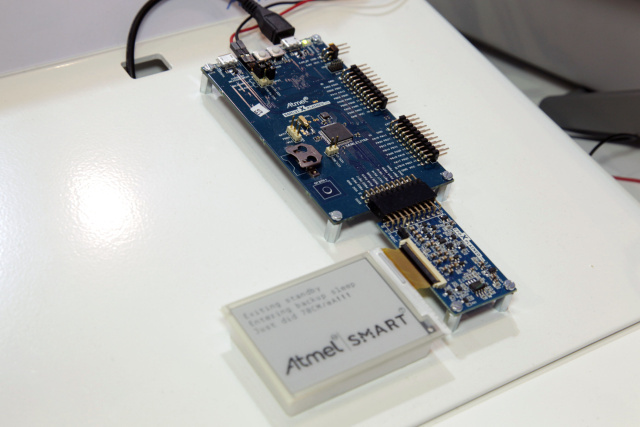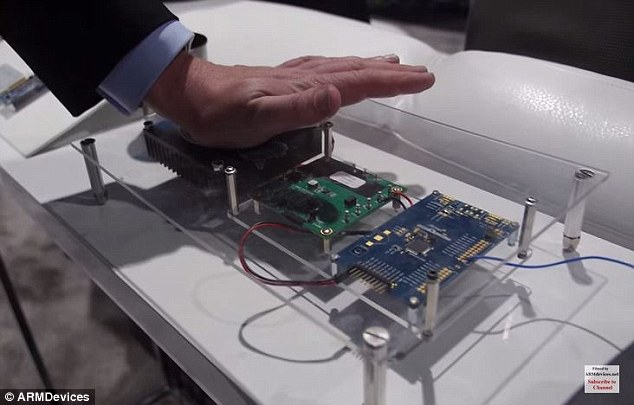Atmel is still too early to dig in - she is very much alive

I want to share the news, which almost passed by, although it deserves your attention. Atmel decided to join the IoT race. The AVR architecture, developed by Atmel in 1996 (meaning the family of eight-bit microcontrollers), is hopelessly outdated. The family of 32-bit AVR32 controllers never gained popularity. Always keep at the expense of reliable and simple as a stone ATtiny and ATmega will not work because of their limited functionality. I myself am a fan of the simplicity and reliability of the AVR, but at one time decided to switch from AVR to ARM from ST, precisely because of the “antediluvianness” of the first and the “stuffed” second. It seemed that Atmel was no longer developing the AVR architecture - then why waste time on the dying - well, I was right.
It seems that the same thought came to mind at Atmel management and they ordered to dig in the direction of new developments on ARM instead of finishing AVR. As a result, we have a new MK series from Atmel SMART SAM L21 on the ARM Cortex-M0 + architecture.
Links here:
- Official presentation of the family from the official Atmel website
- Description on the official website of Atmel
- Press release
- Video from the exhibition:
')
By the way, the SMART SAM S70 and E70 family were presented there on the ARM Cortex-M7 architecture for those who like to drive, but not about them today.
So we have in the end ... SMART SAM L21 series MK series on ARM Cortex-M0 + architecture with ultra low power consumption and maximum frequency of 48 MHz. 256 KB flash drives and 44 KB RAM. In general, everything that was in the old beloved ATmega, but with a big flash and RAM plus chips with power consumption adjustment. And also up to 8 timers-counters. 32-bit real-time clock and calendar. USB HS 2.0 (IMHO, although they could have been 3.0 - 2015 in the yard) in the device and host mode. Up to six different interfaces - USART, I2C, SPI, LIN communicating via SERCOM - Serial Communication Interfaces (some new Atmel development). DAC and ADC. Three operational amplifiers. Up to 51 I / O legs. For lovers of encryption: support AES encryption, RNG, CRC-32. All this in TQFP or QFN packages with 32, 48 or 64 legs. Operating voltage is finally reduced to 1.62V - 3.63V. The ability to connect touch-panels. SWD debug.
The power consumption is less than 35 μA / MHz in working condition and several hundred nA in sleep. This is what Atmel marketing manager Andreas Eieland says about this:
“In the traditional implementation of the sleep mode, all controller blocks are disabled, except for the real-time clock. This is necessary so that after waking up it will remain synchronized. In L21, we completely changed the low-power scheme. The entire chip is divided into five domains, and the residual current can be taken from unused modules. In addition, peripherals continue to communicate even when the controller is asleep. ”
In more detail about the picoPower technology it is possible to read here . And here is the domain diagram from arstechnica.com , about which Andreas says:


In the photo, Andreas Yeland powered the SMART SAM L21 chip from the heat of his hand
Also, in conjunction with the production of chips, Atmel launches a debugging board for prototyping SMART SAM L21 Xplained Pro for some $ 54. Chips and boards will be sold in September 2015.
In general, it sounds pretty tempting. But the number of people willing to transfer to the SMART SAM L21 with ATmega and STM32 will depend only on the cost of the chips. Personally, I’m in a hurry until I’ll wait - I’m waiting for Atmel to pull its development environment to a decent level, or at least start writing plug-ins for Eclipse or IntelliJ CLion, because for me personally, the development efficiency at Atmel Studio 6 is much lower than the productivity of working with Notepad ++.
So we stock up on popcorn and we will see what ST answers.
Update : here @FakeFactFelis tells more about the picoPower technology.
Source: https://habr.com/ru/post/254839/
All Articles